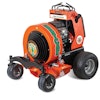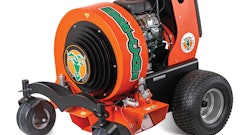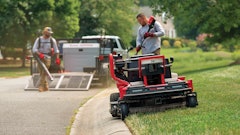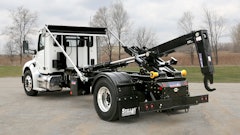The past three years have been a radical roller coaster for Carpenter & Costin. The Rutland, VT, company had its best year ever in 2008, but then saw the top line dive more than 25% the following year. Now they’re almost back to 2008 levels, with one striking difference: They’re doing it with 17 employees as opposed to 24.
Carpenter & Costin began the Working Smarter Training Challenge in April 2009—smack dab in the middle of the downturn. “We were a young company with a ton of overhead,” says president Russ Marsan. Carpenter & Costin was also a company that generated nearly 80% of its sales in residential design/build. When that business turned south, Marsan knew some serious action had to be taken.
Smaller Crews, Shorter Weeks
The company had typically run five- or six-man crews in both maintenance and construction. After a few Working Smarter sessions, it became obvious that this was wasteful.
“We now run two-man crews,” Marsan says. “We very rarely allow more than two guys on a site. If it’s a large construction job, for instance, we might run two two-man crews; one crew does this while the other does that. When needed, one crew might steal a guy from the other crew for a half-hour or whatever. But a dedicated third guy is a waste.”
A fifth working day also proved to be wasteful. “There are so many inefficiencies in day-to-day operations,” Marsan points out, referring to things like the morning routine and drive time to and from the shop. “We decided to start working four 10-hour days. That’s saving us at least $50,000 a year. Plus, our employees love it because they always get a weekend, even when we have a rain day during the week. We’ve also seen a reduction in truck and equipment maintenance costs.”
First brought to the surface by the maintenance division’s operations manager, the concept of switching to a four-day workweek was only possible because everyone got involved—right down to the crew level. “When it’s a grassroots movement where everyone buys in, that’s when something really takes hold,” Marsan says.
How Much Do Your Gorgeous Stripes Cost? “When striping our lawns, we always went for the most visual impact from the road,” says Russ Marsan. “But we were having to turn around all the time, sometimes 50 times on a property. Now we’ve altered our mowing patterns and only have to turn around, say, five times. This is a huge efficiency gain and the lawns still look great.”
Finding the Perfect Team
Initially, not every employee at Carpenter & Costin felt like they had the time to devote to weekly training, so there was a bit of resistance. “Once we got started, though, just about everyone realized that we had plenty of time to train because we were finding all sorts of ways we were wasting time in other areas,” Marsan says.
Those who didn’t weren’t around much longer. “A few of my old-school employees quit because they just didn’t want to change,” Marsan says. “Honestly, that was OK with me. Our company had grown so fast that I didn’t worry about having the right people.”
Now Marsan had the right people—employees who understood and appreciated the Working Smarter process, and were ready to step up and make a difference. “That’s why we started seeing improvements in the first few months,” Marsan says. “I made a commitment to stick to the program, and boy am I glad that I did.”



















![Gravely Pro Turn Mach One My23 Dsc03139 Edit 1200x800 5b2df79[1]](https://img.greenindustrypros.com/mindful/acbm/workspaces/default/uploads/2025/10/gravely-pro-turn-mach-one-my23-dsc03139-edit-1200x800-5b2df791.BucBnDoN22.jpg?ar=16%3A9&auto=format%2Ccompress&fit=crop&h=135&q=70&w=240)

